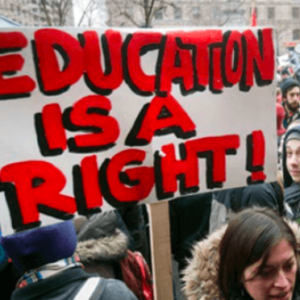Colleges and universities in the United States are at a crossroads. While a postsecondary education’s importance continues to grow, many institutions face significant financial pressures, and students are taking longer to graduate and doing so with increasing debt.
As the United States gears up for the next presidential election, we will hear more calls for investments in financial aid and erasing student debt. Some solutions can be found in public policy, but at their core, colleges and universities need an innovative approach to serving their students and preparing them for our economy.
Warning signs have been on the horizon, starting with college enrollment declining while the demand for postsecondary education has increased. Undergraduate enrollment decreased between 2010 and 2016 from 18.1 million to 16.9 million students. Yet Georgetown University’s Center on Education and the Workforce reports that two-out-of-three jobs require at least some education or training beyond high school.
Enrollment decreases have occurred nationwide, but they have been pronounced in the industrial Midwest and the Northeast. Loss of students means loss of tuition revenue and state support, further exacerbating the financial challenges. In fact, state financial support for higher education grew by only 1.6 percent from 2017 to 2018, which was down from a 4.2 percent increase the prior year. Eight in 10 undergraduates attend a public college or university, so state support is vital to their operations.
With these factors in play, it is no surprise that the cost of attendance is up and student debt has increased. The Federal Reserve reported earlier this year that outstanding student debt has reached an all-time high of $1.5 trillion. As many as one in six graduates will leave school with debt that exceeds their income.
Amid these pressures, policymakers are proposing to make college free for all students or erase the student debt of college graduates. These ideas can sound tempting, but paying for such lofty proposals is a major roadblock. Taking on that level of public support is unsustainable.
What’s more, taxpayers shouldn’t pick up the entire burden of rising costs; this must be a shared responsibility. While lower state support has played a role in higher costs, they aren’t the only cause.
Colleges and universities need to better manage their enterprises by controlling costs, improving efficiencies, and better aligning skills learned in higher education with workforce needs. Some schools have stepped up, but not enough. And those that stand on the sidelines, especially non-elite regional colleges, could find themselves obsolete.
Luckily, several college and university presidents are leading the way on innovation. They are managing costs and putting their colleges on good financial footing. More important, they are better serving students and preparing them for life after college.
Purdue University and its president, Mitch Daniels, have gained significant attention for the tuition freezes that keep costs in check at this public university. Tuition has been frozen, with in-state tuition and fees costing $9,992. Those costs have stayed flat since 2012 and will remain so until at least the 2019-2020 school year. That’s unheard of in higher education.
Daniels has frozen tuition by finding savings efficiencies in small ways that add up to significant savings. He’s been quick to take responsibility for keeping college affordable for students, instead of solely putting the blame on others.
He has also led Purdue to purchase Kaplan University, the for-profit online university that has been rebranded Purdue Global and allowed the university to reach thousands of adult students. Instead of building their own online education platform, Purdue made the innovative decision to leverage an existing platform.
While it is unknown whether this will improve student outcomes, Daniels is one of the few higher education leaders who would have executed such a project.
President Michael Sorrell at Paul Quinn College in Dallas is building an innovative work program to better prepare his students for life after college. When Sorrell arrived in 2007, Paul Quinn was on the brink of closure. But he has almost single-handedly turned it around.
He has implemented an urban work model for students that integrates a job with higher education, thereby reducing tuition and fees for students and average student debt loads and preparing students for careers. That practical model benefits students and has put the college on a more sustainable financial footing.
Georgia State University, a public university in Atlanta, has intensively used data and predictive analytics to track student progress and improve outcomes. Mark Becker, the university’s president, has a vision and plan to ensure that working-class students not only enter the university, but graduate with a degree on time. Its graduation rate has gone from 32 percent in 2003 to 54 percent in 2017.
Each of these schools and their leaders have taken an innovative approach to serving students. Unfortunately, too many others have not done adapted and updated their model, leaving them to face even more financial challenges. As the cycle continues, candidates will be tempted to propose making college free for students. But we’re far from having the resources available to enact those proposals.
It is hoped more colleges and universities like Purdue, Paul Quinn College and Georgia State will lead the way.

